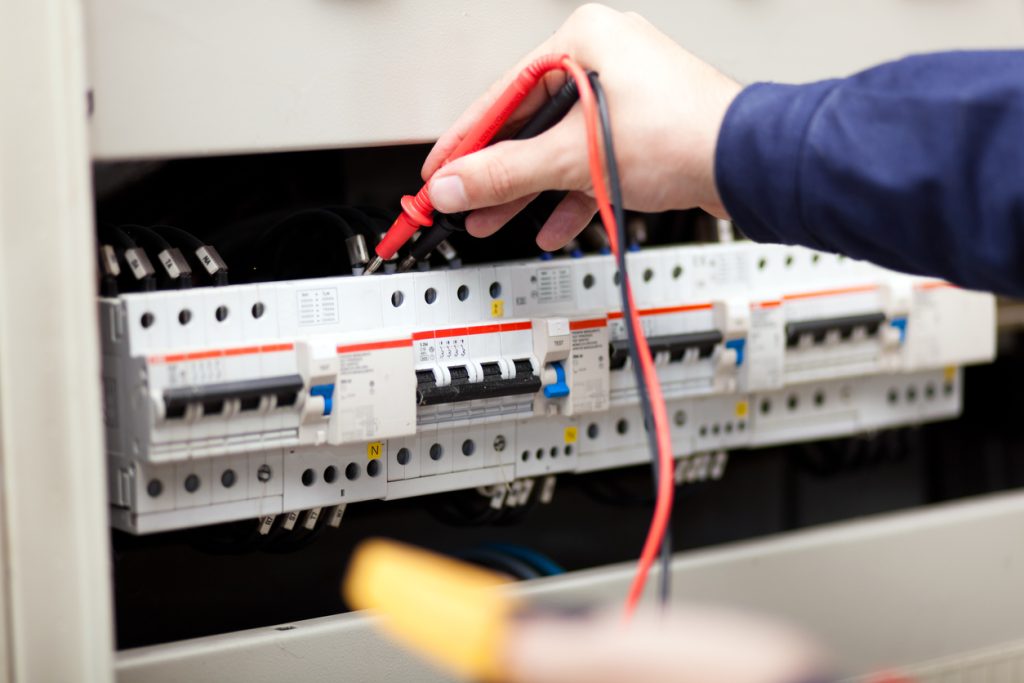Home > Property Investor Library > Electrical Safety in Rental Properties (England)
Electrical Safety in Rental Properties (England)
Welcome to our guide on electrical safety in rental properties. As a landlord, you play a crucial role in ensuring the safety of your tenants. This guide will help you understand your legal responsibilities and best practices for maintaining electrical safety in your properties.
Summary
Landlords are legally and morally responsible for the electrical safety of a property, if anything goes wrong they are liable, so it’s important to follow best practice, and not just the legal minimum, which may not be a sufficient defence in case the worst happens.
Electrical Installation Condition Report (EICR): Legal requirement to be completed every 5 years, or as advised on the previous certificate.
Portable Appliance Testing (PAT): No specific legal requirement (unless licensed property), but best practice is to have all portable appliances inspected every 12 months.

What does the law say?
Up until recently, landlords’ responsibility for electrical safety was general, and not prescribed with an overall responsibility to make sure a property was electrically safe, but the specifics of how that was to be done were left entirely to the landlord.
Landlords of licensable properties, (properties coming under mandatory, additional, or selective licensing), were often given more specific requirements for electrical safety as part of the licensing requirements.
Landlord and Tenant Act 1985:
Housing, Health and Safety Rating System (HHSRS):
The Electrical Safety Standards in the Private Rented Sector (England) Regulations 2020:
- Mandatory Inspections: Landlords in England are required to arrange fixed electrical installation safety inspections every five years.
- Implementation Dates: The law came into effect on 1st June 2020, with safety inspection reports mandatory for new tenancies from 1st July 2020 and existing tenancies by 1st April 2021.
- Inspection Requirements: Inspections must be conducted by a qualified person, and upon completion, landlords are required to obtain and retain a report, sharing it with current and new tenants, prospective tenants upon request, and the person conducting the next inspection.
- Remedial Action: If the inspection report highlights the need for remedial action, landlords have a 28-day window to complete the work, with the possibility of a reduced timeframe if required by the Local Authority.
- Fines for Non-Compliance: Landlords may face a civil penalty of up to £30,000 for failing to comply with the regulations.
Licensed Property Requirements (mandatory, additional, selective)
In addition to the now mandatory EICR inspections, most licensing schemes require landlords to have PAT completed annually. Please check the licensing standards provide by your local authority to be sure.
What is best practice?
Regular Inspections: Beyond the legal requirement of every five years, conducting more frequent electrical safety checks helps in early identification and resolution of potential hazards such as:
- Damaged or exposed wiring
- Overloaded sockets
- Loose or broken sockets/switches
- Signs of overheating, scorch marks or discoloration around sockets, switches or electrical appliances.
- Safe routing of cables, ensuing that they are not running under carpets or across doorways where then can be damaged.
Regular Appliance Testing: Conduct Portable Appliance Testing (PAT) on all electrical appliances provided to tenants.
Prompt Repairs: Address any identified electrical issues immediately, prioritizing those categorized as urgent.
Maintain Records: Keep detailed records of all inspections, repairs, and communications with tenants regarding electrical safety.
Tenant Education: Educate tenants about electrical safety and encourage them to report any electrical concerns and educate them on safe practices, like not overloading sockets. See an example here.
There are additional regulations covering the maintenance and inspection of your fire detection and other safety equipment such as smoke/heat alarms, emergency lighting and smoke vents.
Who can carry out the inspections?
For EICR inspections, the legislation states that it the landlords responsibility to ensure the inspecting engineer is qualified and competent.
This can be done in one of two ways:
- Check if the inspector is a member of a competent person scheme; or
- require the inspector to sign a checklist certifying their competence, including their experience, whether they have adequate insurance and hold a qualification covering the current version of the Wiring Regulations and the periodic inspection, testing and certification of electrical installations.
Competent persons schemes:
